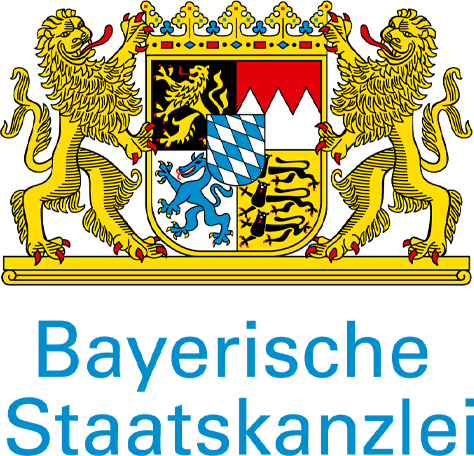Constitutional Court gives AARTO the go-ahead: What does the judgment mean for municipalities?
Much of the public outcry around AARTO has been around the introduction of the points demerit system for traffic offences, which may lead to the suspension or cancellation of one’s driving licence, as well as the prohibition on driving a vehicle. The crux of the case in both the High Court and Constitutional Court (CC), however, was whether Parliament had the authority to regulate municipal and provincial road traffic.
Background
The AARTO Act of 1998 and the AARTO Amendment Act of 2019 introduce the administrative enforcement of traffic laws – a shift away from the judicial enforcement of traffic laws through the Criminal Procedure Act of 1977. The AARTO Act has been operational in Johannesburg and Tshwane since 2008. The Act, as well as the AARTO Amendment Act, were initially set to come into force nationally from July 2021, following the assent by President Cyril Ramaphosa in 2019. This was, however, halted by the legal challenge against both Acts brought by the Organisation Undoing Tax Abuse (OUTA), a non-profit civil action organisation against the Minister of Transport, Minister of Cooperative Governance and Traditional Affairs, the Road Traffic Infringement Authority (RTIA) and the Appeals Tribunal. OUTA questioned Parliament’s authority or power to pass the laws and regulate municipal and provincial road traffic. The High Court judgment was previously explored in the Bulletin.
Arguments of OUTA in the CC
OUTA submitted that the AARTO Act and Amendment Act take control of the exclusive legislative authority of provincial legislatures by regulating road traffic, whereas provincial and municipal road and traffic regulation functions fall within the exclusive legislative competence of provinces in terms of Part A and B of Schedule 5 of the Constitution. OUTA further submitted that the laws take control of the exclusive executive competence of local government to enforce traffic and parking laws at the municipal level as per Part B of Schedule 5 of the Constitution. OUTA also argued that the administrative decision-making and enforcement powers associated with a system of administrative levies to induce compliance and demerit points should be exercised by municipalities.
Arguments of the Minister of Transport and Others in the CC
The Minister appealed the High Court’s order and also opposed OUTA’s application for confirmation of the order of invalidity. The Minister argued that the AARTO Act fell within the concurrent legislative competence of Parliament and provincial legislatures in the area of road traffic regulation, as provided in Part A of Schedule 4 of the Constitution. Furthermore, the Minister contended that AARTO did not remove any executive powers or functions from local government pertaining to municipal roads and traffic, nor did it encroach on those powers in any way.
Judgment
The CC had to determine whether Parliament was competent to pass the AARTO. If found not to be competent, then the AARTO and AARTO Amendment Act would be unconstitutional. However, if found to be competent, then the Court would have to determine whether the AARTO usurps municipalities’ executive functions. To do so, the Court first determined the placement of the Act in relation to the functional areas in Schedules 4 and 5 of the Constitution – basically asking whether the Act falls under “road traffic regulation” in Schedule 4A, “provincial roads and traffic” in Schedule 5A, or “municipal roads” or “traffic and parking” in Schedule 5B. The CC cemented the test used to determine whether a law falls into Schedule 4 or 5 of the Constitution, which requires determining the subject matter or substance of a law, the purpose and effect of a law, and whether such subject matter falls into Schedule 4 or 5 of the Constitution.
The CC considered the subject matter of the AARTO Act by referring to its preamble and objectives set out in section 2 of the Act. The CC found that the Act’s objective to encourage compliance with national and provincial laws and municipal by-laws relating to road traffic showed that the Act was aimed at a national objective to ensure uniformity of traffic laws and enforcement across provincial boundaries. The Court, thus, ruled that the Act falls within the legislative competence of the national government because placing it within the exclusive legislative competence of provinces could result in nine provincial laws attempting to achieve the same objective or potentially differing. This could cause conflict and confusion to motorists as different laws would apply in different provinces. The CC further held that a finding that AARTO falls within “road traffic regulation” under Schedule 4A meant the objective referred to above was already met, as Schedule 4A functional areas fall within the concurrent legislative competence of both national and provincial governments. Matters such as the adjudication of and penalisation for contravening road traffic laws, systems of issuing and revoking driving licences, and the application of a point demerit system require inter-provincial regulation.
On the question of exclusive municipal executive competence over “traffic and parking”, the CC found that none of the provisions in the AARTO Act seize municipalities’ functions or powers in respect of municipal roads, traffic and parking – municipalities remain “issuing authorities” in terms of section 17 of the Act, responsible for issuing infringement notices to transgressors and administering the initial penalty fee paid by a transgressor. Secondly, one of the objects in section 4 of AARTO is “to encourage compliance with…municipal by-laws relating to road traffic…”, which the CC took as AARTO’s support for the administrative and executive enforcement of traffic by-laws together with AARTO.
Commentary
The governmental powers and functions are distributed between the national, provincial and local governments. National government shares, with provinces, the functions listed in Schedule 4 of the Constitution and also has exclusive powers over residual functions, which are governmental powers not listed in the Constitution. Provinces have exclusive power over Schedule 5 functions, subject to national intervention in terms of section 44(2) of the Constitution. Lastly, municipalities’ functional areas are provided in Part B of Schedules 4 and 5, subject to regulatory limitations by national and provincial governments. This means that each sphere of government is empowered to pass laws, ensure the implementation of laws, as well as to perform the functions allocated to it. This distribution of powers raises a number of issues: first, the absence of clear definitions of the functional areas often presents what can be called “functional overlaps”. The functional overlaps, in this case, were between “road traffic regulation”, “provincial roads and traffic”, “municipal roads” and” traffic and parking”. The CC was less explicit about adopting the principle that local government competencies should be interpreted first. The CC, thus, adopted a literal approach to determine where the AARTO Act falls, which means the CC interpreted the AARTO Act using the plain meaning of the language in the Act. On a plain reading, the AARTO Act did not relate only to provincial and/or municipal road traffic – it relates to national road traffic. The Act’s wide(r) reach, therefore, removes it from the exclusive legislative competence of provinces and places it under “road traffic regulation”.
Secondly, although local government matters are separated from national and provincial government in the Schedules, these matters are not allocated to local government exclusively. National and provincial governments may also regulate these matters as they are part of the concurrent legislative competence in Schedule 4, as well as the exclusive provincial legislative competence in Schedule 5 to the extent set out in sections 155(6)(a) and (7) of the Constitution. This means that the regulation of local government matters must be done so as to provide minimum norms and standards, guidelines and frameworks to support municipalities to effectively exercise their powers and/or perform their functions. The regulation must not deal with the details and specificities of a local government function or the performance of a function in a specific municipality. The details must be left to a municipality to legislate on through by-laws, should there be gaps identified in the national or provincial legislation or should a municipality seek to tailor make its by-law to address localised issues. Even with the Court’s literal approach, the CC still protected the autonomy of local government in the judgment.
Thirdly, could it be said that the AARTO Act has an overreaching effect that suppresses municipalities from legislating on and performing “municipal roads” and “traffic and parking” functions? It does not appear so. The AARTO seeks to regulate road traffic nationally, introducing a demerit point system and creating administrative enforcement of traffic infringements via the RTIA and Appeals Tribunal. It is appropriate to have standardised procedures for traffic infringements and the enforcement of a demerit point system through uniform rules and regulations. Provinces and municipalities are not prevented from passing provincial laws and by-laws with additional provisions addressing local traffic issues, so long as these laws do not contradict the AARTO Act.
Although the CC did not deal with the substance of the AARTO and AARTO Amendment Act, the effects of AARTO on municipalities are important. Its enforcement will affect many municipalities’ financial and fiscal powers to generate revenue from traffic fines. This is because the payment of traffic fines, whether at the initial stage of a transgression or at the stage where summons to appear in court had been issued, currently goes to a municipality as the issuing authority. The diversion of traffic fines to RTIA, which is also empowered to levy penalties for the administrative processes it undertakes, means a sizeable portion of the money generated through traffic fines will now go to the RTIA. Where a municipality acts as an issuing authority it will only receive the penalty payable at the stage where the infringement notice is issued (minus the discount offered where a transgressor pays their fine within 32 days of the date of service of the infringement notice - section 17 AARTO). Where the fine is not paid within 32 days, the matter escalates to the RTIA, which then levies fees for the processes instituted to enforce compliance such as issuing a courtesy letter, representations, payments notice, and issuing an enforcement order. Depending on how far a transgression goes, where a payment is made to RTIA, a municipality acting as an issuing authority will only receive the initial penalty minus the discount offered in the infringement notice. The remainder of the fees collected will be kept by RTIA (sections 31 and 32 AARTO). Were municipalities empowered to exercise this administrative enforcement, the revenue from fees would remain in municipal coffers to be used for municipality-related costs such as strengthening municipal courts or the remuneration of traffic officers.
In conclusion, municipalities are not prevented from exploring alternative means to enforce traffic laws and generate revenue while doing so. The operation of AARTO may just propel municipalities to be creative in the formulation of their traffic by-laws.






